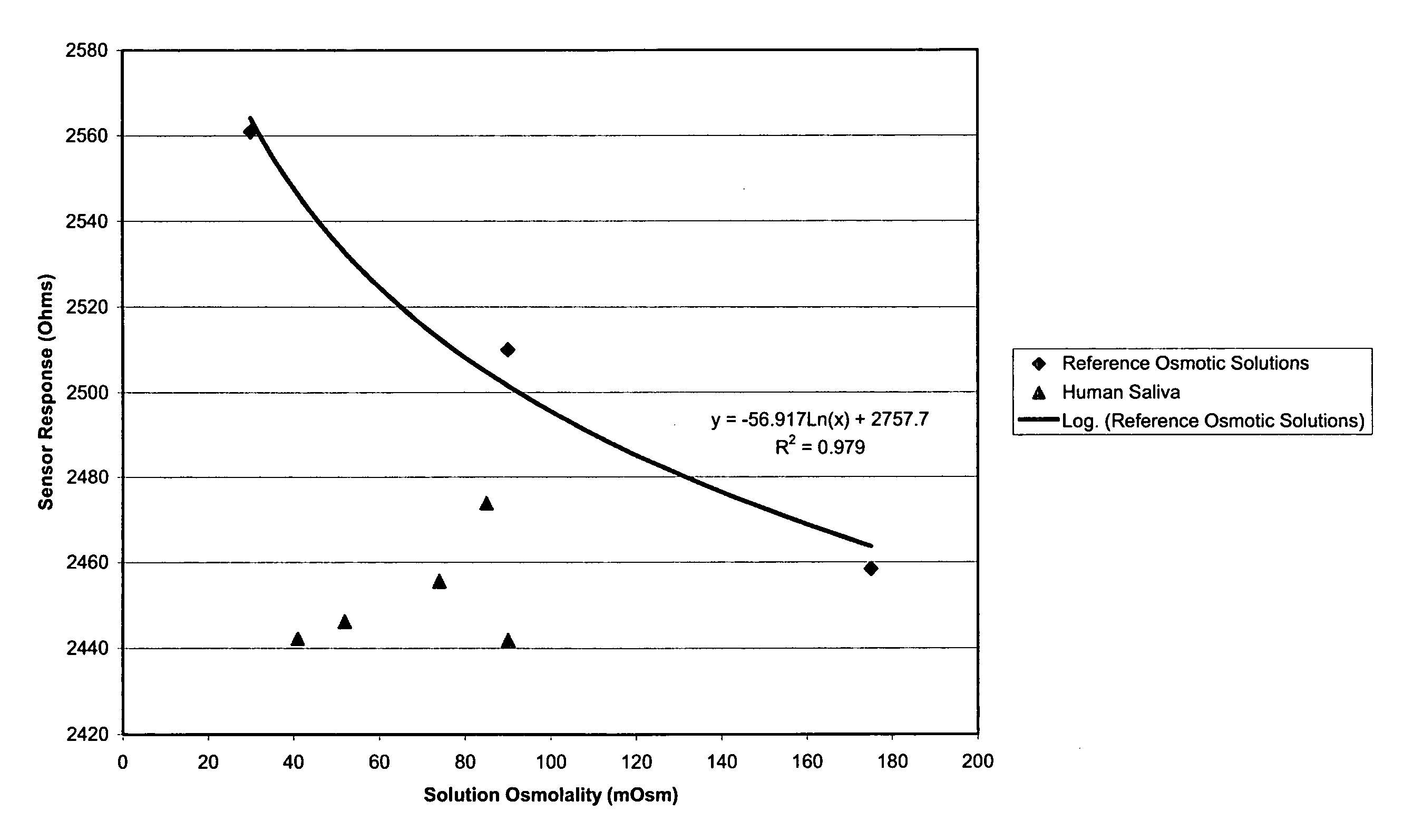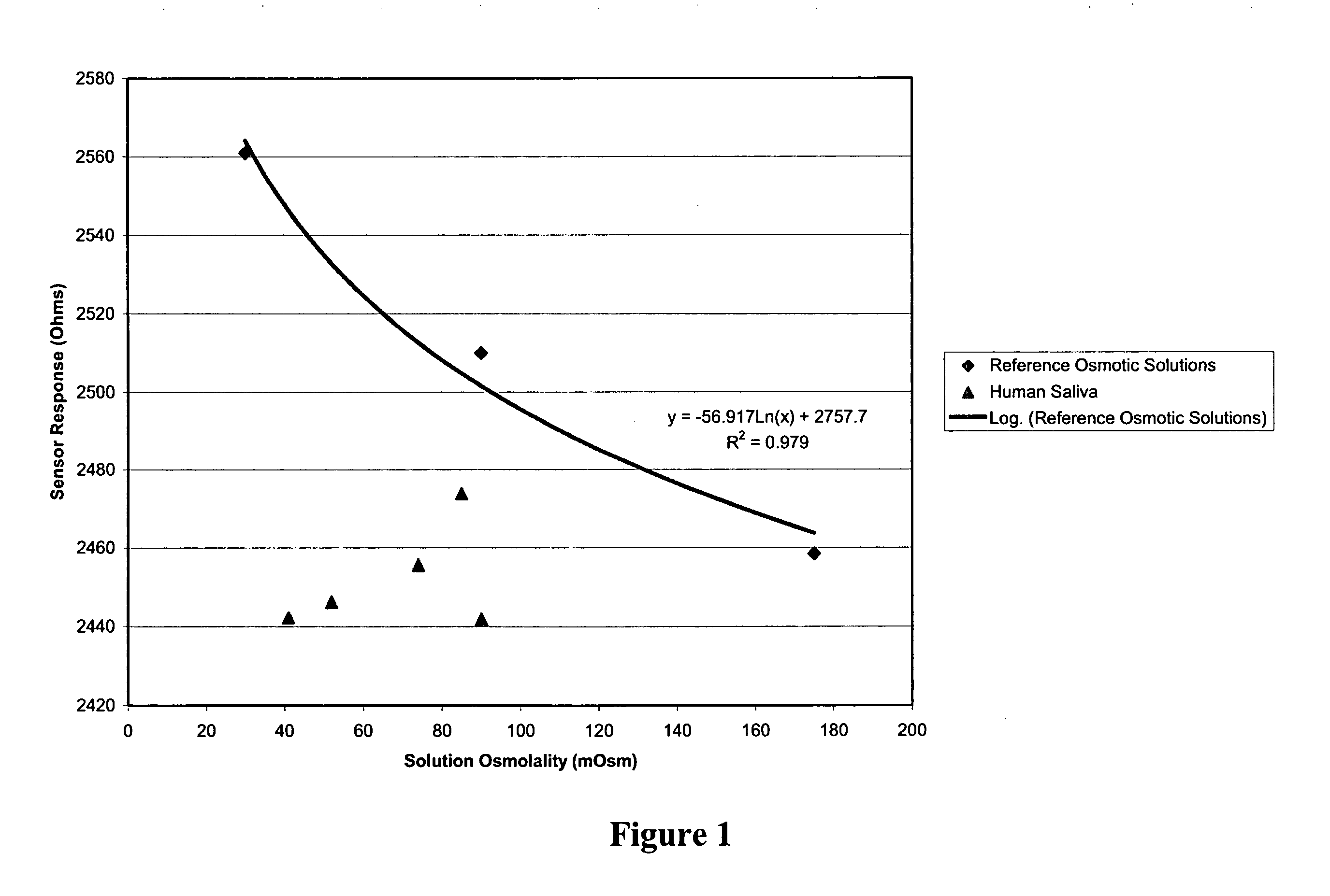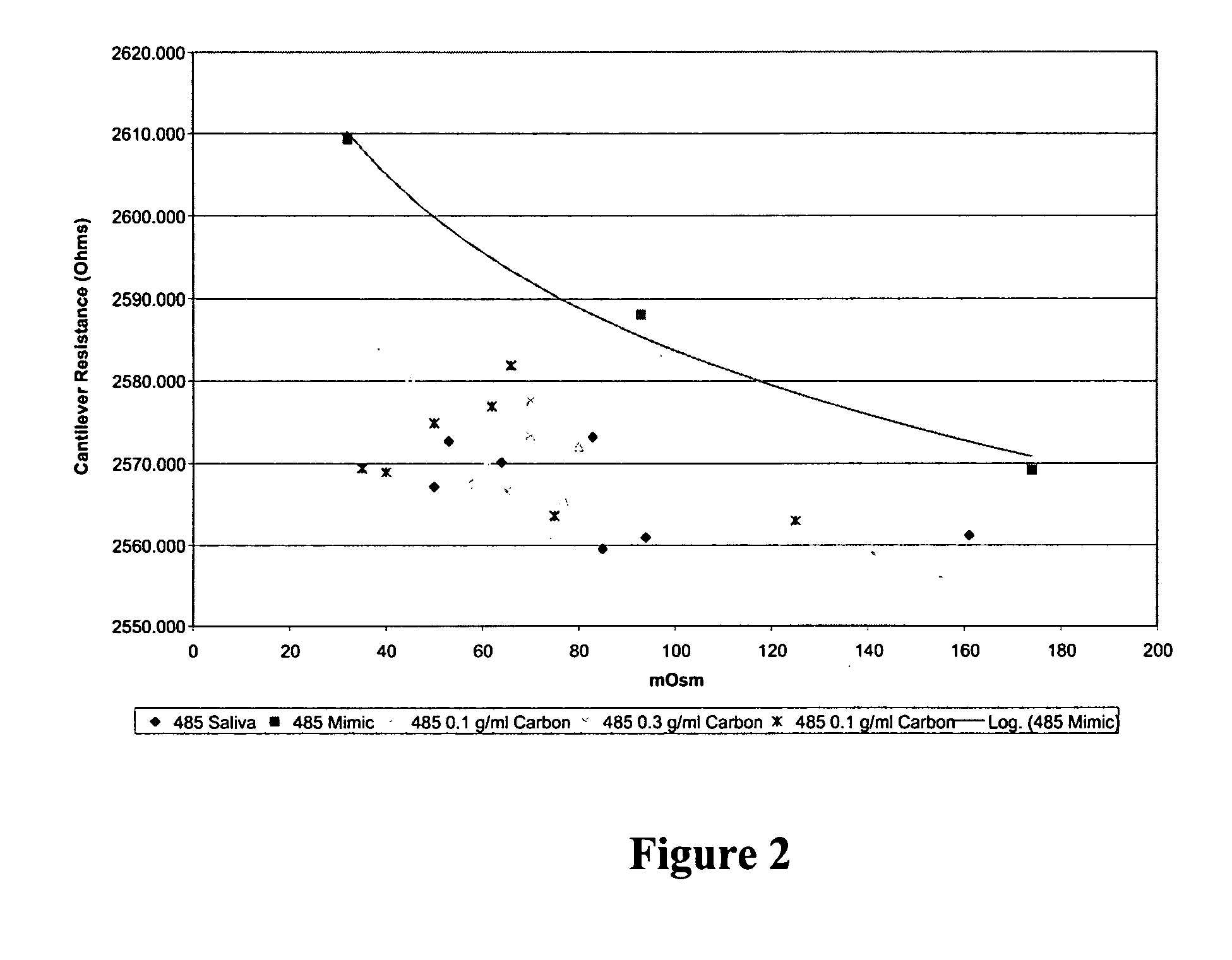Methods, systems and devices for analyzing a surfactant-treated biological fluid sample
a biological fluid and surfactant technology, applied in chemical methods analysis, chemical analysis using chemical indicators, instruments, etc., can solve the problems of difficult to analyze saliva bulk properties, difficult to obtain and validate the results obtained from biological sample analysis,
- Summary
- Abstract
- Description
- Claims
- Application Information
AI Technical Summary
Benefits of technology
Problems solved by technology
Method used
Image
Examples
example 1
MEASUREMENT OF OSMOLALITY OF UNTREATED SALIVA SAMPLES AS COMPARED TO STANDARD METHODS OF SAMPLE PREPARATION
A. Measurement of Osmolality of Untreated Saliva Samples.
[0110]Initial attempts to obtain osmolality data from saliva using a hydrogel sensor was met with unstable osmolality readings and inconsistent results. Attempts to determine the osmolality of human saliva, led to sensor measurements which were slow, inaccurate, not reproducible, and elevated when compared to sensor measurements of saline solutions of similar osmolality (as determined by freezing point depression osmometry).
[0111]More specifically, when a hydrogel sensor was placed directly into an unprocessed saliva sample, the response of the sensor would take 15 minutes to over an hour to achieve a rate of change of cantilever resistance less than 0.1 Ohm / minute. Repeat measurements of identical saliva samples yielded inconsistent results, particularly if separated by different samples.
[0112]The cantilever resistance ...
example 2
MEASUREMENT OF OSMOLALITY OF SALIVA SAMPLES TREATED WITH SURFACTANTS
[0124]Further studies were carried out to test the effect of additional surfactants to determine if an accurate and consistent determination saliva osmolality could be achieved by sample treatment with surfactants prior to osmolality determination using a hydrogel sensor.
[0125]It was eventually determined that treatment of saliva with certain anionic surfactants resulted in accurate and consistent determinations saliva osmolality using hydrogel sensors as compared to freezing point depression.
[0126]Prior to carrying out the studies, sensing hydrogels were immersed in a dilute (0.05M) sodium hydroxide solution for one hour.
[0127]The results showed that treatment of saliva samples with SDS at a final concentration of from 0.01% to about 0.25% resulted in consistent and accurate values when saliva osmolality was measured using a hydrogel sensor.
[0128]FIG. 9 is a graphic depiction of cantilever resistance (Ohms) versus...
example 3
MEASUREMENT OF OSMOLALITY OF SALIVA SAMPLES TREATED WITH SURFACTANTS
[0134]In one experiment, a polymer was prepared using hydroxyl propyl acrylate, acrylamide and acrylic acid in a weight ratio of (85:14.5:0.5) and subsequently converted into a hydrogel by cross linking with 0.2% Cymel 327 (an aminoplast resin sold by Cytec Corporation). The hydrogel was incorporated into microcantilever based sensors and individual sensor response to temperature, pH and Osmolality was characterized, as shown in Table 3.
TABLE 3Response of a Hydrogel Sensor to Temperature, Osmolality and pH.OsmolalityPolymerGainpH GainTemp. Gain (ohm)(ohm) 30 to(ohm) pHSensor18° C. to 42° C.175 mOsmol5.0 to 8.0623 Rmc−92353.9626 Rmc−9440.4−0.4628 Rmc−53.925.70.4629 Rmc−39.418.60.4634 Rmc−101.644.40.6625 Rmc−78.435.90.5638 Rmc−76.841.50.1640 Rmc−80.935.70642 Rmc−8341.30643 Rmc−105.947.9−0.7
[0135]It will be appreciated that the temperature response of the sensors are in fact much higher than their sensitivity to osmol...
PUM
| Property | Measurement | Unit |
|---|---|---|
| freezing point | aaaaa | aaaaa |
| vapor pressure | aaaaa | aaaaa |
| boiling point | aaaaa | aaaaa |
Abstract
Description
Claims
Application Information
 Login to View More
Login to View More - R&D
- Intellectual Property
- Life Sciences
- Materials
- Tech Scout
- Unparalleled Data Quality
- Higher Quality Content
- 60% Fewer Hallucinations
Browse by: Latest US Patents, China's latest patents, Technical Efficacy Thesaurus, Application Domain, Technology Topic, Popular Technical Reports.
© 2025 PatSnap. All rights reserved.Legal|Privacy policy|Modern Slavery Act Transparency Statement|Sitemap|About US| Contact US: help@patsnap.com



